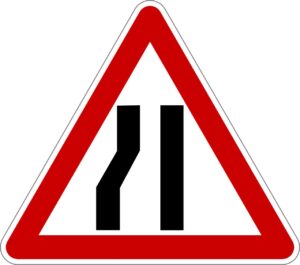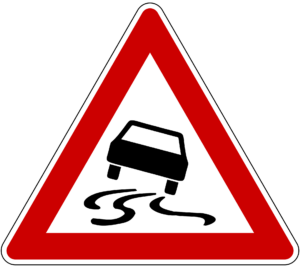A red license plate for the trailer

The use of the red license plate
Red number plates can only be used for a limited or recurring operational use, they are so-called transfer number plates. So if you only want to use a vehicle or trailer for a short, limited period of time (to allow it, for example), the red license plate is an option for you. However, you can only get the license plate from the local registration authority if you are a car manufacturer, car parts manufacturer, a car dealer or a workshop. Then the license plate is not tied to a vehicle or a trailer.
Different license plates
This license plate is characterized by the fact that red lettering is used on a white background. It consists of a distinguishing character followed by an identification number. This consists exclusively of numbers and begins with the “06” in Germany.
There are also license plates with a white background, red lettering, distinguishing signs and an identification number that begins with „07“. This is intended for vintage cars. In the case of classic cars, for example, a red license plate is relevant for participation in events. A big difference to the aforementioned license plate: The license plate for classic cars can also be issued to private individuals.
The pros and cons of the red license plate
A major advantage of the license plate is that it is not tied to a specific vehicle. It can be very practical, especially for car dealerships and workshops, to have such a license plate „at hand“ when, for example, test drives or transfers have to be made.
The disadvantage is that the license plate does not meet the requirements of the 1968 International Convention on Road Traffic. Therefore it may only be used nationally and not internationally.
In the case of vintage cars, you must also ensure that the vehicle meets the general conditions for a vintage car. Otherwise, the specific license plate cannot be awarded either.

 Camping with a caravan is becoming increasingly popular, as is traveling in your own country. But what is actually important and allowed, what should you pay attention to when camping with a caravan in Germany?
Camping with a caravan is becoming increasingly popular, as is traveling in your own country. But what is actually important and allowed, what should you pay attention to when camping with a caravan in Germany? If you want to be on the road with a heavy trailer, a class B driving license is not enough. With this driver’s license, trailers are only allowed up to a permissible total mass of 750 kg. Driving a heavier trailer requires a BE driving license or a B96 driving license if, for example, you are traveling with a horse trailer or caravan.
If you want to be on the road with a heavy trailer, a class B driving license is not enough. With this driver’s license, trailers are only allowed up to a permissible total mass of 750 kg. Driving a heavier trailer requires a BE driving license or a B96 driving license if, for example, you are traveling with a horse trailer or caravan. In the last
In the last  The round prohibition sign shows a truck and states that a general driving ban applies to all motor vehicles with a permissible total weight of more than 3.5 tons. The sign also applies to trailers and their towing vehicles. The only exceptions are cars and buses. So if your motor vehicle is heavier, you will not be allowed to drive through after this sign.
The round prohibition sign shows a truck and states that a general driving ban applies to all motor vehicles with a permissible total weight of more than 3.5 tons. The sign also applies to trailers and their towing vehicles. The only exceptions are cars and buses. So if your motor vehicle is heavier, you will not be allowed to drive through after this sign.
 The last traffic sign with a red frame is about the length of your vehicle. Pictured is a truck as well
The last traffic sign with a red frame is about the length of your vehicle. Pictured is a truck as well As the driver of a trailer, you must keep an eye on the traffic sign for narrow lanes, especially if your trailer is wider than your towing vehicle. In this case, drive a little more carefully into the bottlenecks or danger spots, drive slowly and use your side mirrors.
As the driver of a trailer, you must keep an eye on the traffic sign for narrow lanes, especially if your trailer is wider than your towing vehicle. In this case, drive a little more carefully into the bottlenecks or danger spots, drive slowly and use your side mirrors.
 The traffic sign for uneven roads is important for you as a driver, because bumps in the road can cause the load to behave differently than usual. The load could come loose or start moving. In both cases, this also influences the handling of the vehicle combination. This is just one of the reasons why it is very important to always secure your cargo well. You can read about how best to do this in
The traffic sign for uneven roads is important for you as a driver, because bumps in the road can cause the load to behave differently than usual. The load could come loose or start moving. In both cases, this also influences the handling of the vehicle combination. This is just one of the reasons why it is very important to always secure your cargo well. You can read about how best to do this in  to adjust the driving style accordingly. When a trailer starts to slide, it can have very different effects. If the trailer simply slides forward, you as the driver must ensure that you also use the engine brake when braking. The reason is that your car will also slide more, since the weight of the trailer exerts additional force on the vehicle from behind. If the trailer shears out and slides sideways, dangerous situations can quickly arise. It is important for you to remain as calm as possible and to avoid hectic braking and steering maneuvers in any case.
to adjust the driving style accordingly. When a trailer starts to slide, it can have very different effects. If the trailer simply slides forward, you as the driver must ensure that you also use the engine brake when braking. The reason is that your car will also slide more, since the weight of the trailer exerts additional force on the vehicle from behind. If the trailer shears out and slides sideways, dangerous situations can quickly arise. It is important for you to remain as calm as possible and to avoid hectic braking and steering maneuvers in any case. After your trailer ride, your trailer must be safely “stowed away” again. We have put together a few tips for you on parking, uncoupling and securing the trailer, which you should pay attention to when parking the trailer.
After your trailer ride, your trailer must be safely “stowed away” again. We have put together a few tips for you on parking, uncoupling and securing the trailer, which you should pay attention to when parking the trailer. You are about to start your first trip with the trailer, but you have not yet attached it yourself? We have a few tips for you and explain the most important steps for securely and easily attaching your trailer.
You are about to start your first trip with the trailer, but you have not yet attached it yourself? We have a few tips for you and explain the most important steps for securely and easily attaching your trailer. Before every trip with the trailer, you will certainly check your lighting equipment and the locking of the trailer on the towbar, but the wheels and brakes should also be checked regularly. Your trailer will have its own brakes itself if it weighs more than 750 kg. It is set that trailers can only be pulled without brakes up to a maximum permissible total weight of 750 kg. Why is this important? Because, above all, with increasing weight, the braking distance of your combination changes and the trailer infects the vehicle from behind when braking. It practically pushes the towing vehicle when braking, so that the vehicle’s brakes have to be more efficient. At the same time, there is an increased risk of pulling out of the trailer with heavy trailers without their own brake.
Before every trip with the trailer, you will certainly check your lighting equipment and the locking of the trailer on the towbar, but the wheels and brakes should also be checked regularly. Your trailer will have its own brakes itself if it weighs more than 750 kg. It is set that trailers can only be pulled without brakes up to a maximum permissible total weight of 750 kg. Why is this important? Because, above all, with increasing weight, the braking distance of your combination changes and the trailer infects the vehicle from behind when braking. It practically pushes the towing vehicle when braking, so that the vehicle’s brakes have to be more efficient. At the same time, there is an increased risk of pulling out of the trailer with heavy trailers without their own brake. If you load your trailer, you may have to attach a warning sign to the trailer, of course this must be done before the journey. But in which cases is a sign required and what should it look like?
If you load your trailer, you may have to attach a warning sign to the trailer, of course this must be done before the journey. But in which cases is a sign required and what should it look like?